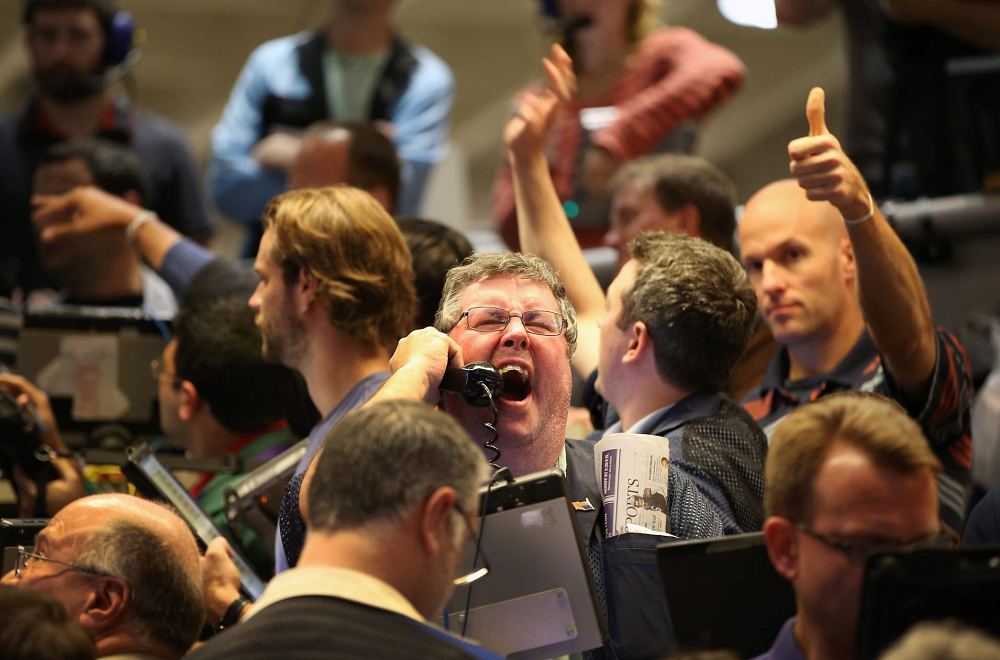The credit markets are signaling a bigger problem is afoot despite the Fed’s interventions
March 13, 2020 @ 11:24 +03:00
While much of the attention in the bond market has focused on the Treasury side, corporate fixed income has been in its own state of turmoil. Interest rates on the lowest-rated companies have spiked, rising above their government bond counterparts in a fashion not seen in 15 years. Default rates are expected to climb, and there’s fear that the worst could be yet to come amid roiled markets and growing expectations for a global recession.
“The level of concern is pretty obviously elevated here,” said Oleg Melentyev, head of high-yield strategy at Bank of America Global Research. “We have seen quite a dramatic widening in different measures of spread and in different segments of the market. Some of the things have moved at record or close to record pace in the past few days. So certainly we are watching this situation very closely.” While nominal rates capture the headlines in the bond market, pros like Melentyev watch spreads, or the difference between yield on, say, a 10-year Treasury bond compared with a corporate of the same duration.
For most of 2019, spreads had stayed in a fairly muted range, before swinging dramatically higher starting in mid-February, right around the time when fears intensified over the coronavirus contagion. The most recent reading of the ICE BofA US High Yield Index Option-Adjusted Spread index was at 6.61 percentage points; at the Feb. 17 low it was 3.56 percentage points. The ICE BofA Single-B US High Yield Index Effective Yield index was at 7.92%, the highest since early 2019 and compared with a record-low 4.98% on Feb. 21.
Corporate bond investors like big spreads. It means they’re getting compensated through yield for the risk they are taking on companies with less desirable credit qualities.
The energy (14.825%) and air transportation sectors (10.82%) have seen the biggest jumps in yields, according to Debtwire, which also reported outflows of $9.32 billion from high-yield bond funds over the past two weeks.
There’s trouble ahead However, the rising yields and spreads also present danger.
With all of the unpredictability surrounding the coronavirus, the tumbling oil prices that are hitting an already battered energy sector that makes up a big chunk of the high-yield space, and the unknowns of what fiscal and monetary measures are to come, now may not be the time to take on that kind of risk.
After all, the unofficial consensus around Wall Street is that default rates are likely to rise above 5% this year, not terrible but well above the benign levels that have prevailed for years.
The outlook already was getting cloudy for corporate credit heading into the coronavirus scare. Just four of the 53 sectors that Moody’s analyzes had positive outlooks, while 15 were negative, the worst increase in the latter category since the financial crisis. Beverages, medical products and devices, midstream suppliers and refining and marketing were the only companies with positive outlooks. Gaming, retail and chemicals were among the negatives.
“We’re still cautious. There are so many uncertainties out there,” said Collin Martin, fixed income strategist at Charles Schwab. “It’s a very tough time, but we are cognizant that valuations are more attractive now. Rather than try to catch a falling knife, we are still a little cautious and for now we are continuing our underweight recommendation for high-yield bonds.”
The Fed tries to help Federal Reserve intervention has done little to quell the overall market tumult. Despite the central bank vowing Thursday to pump in more than $1 trillion into the Treasury market, stocks continued to sell off though longer-term government yields moved a bit higher after hitting record lows earlier in the week.
Stabilization in the high-yield market is critical after more than a decade of low rates that helped fuel the sector into an increasingly large share of the nearly $10 trillion in outstanding corporate debt. But it’s not just the lower-rated part that is important. Companies that occupy the lower tranches of the investment-grade sphere but are in danger of sliding lower into junk territory are an increasing concern as funds that hold those bonds have to sell them if they’re downgraded.
The credit markets are signaling a bigger problem is afoot despite the Fed’s interventions, CNBC, Mar 13








